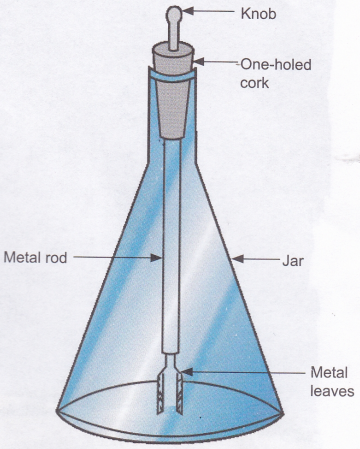What is meant by Transfer of Charge
Transfer of Charge
Electric charge can be transferred from a charged object to another through a metal conductor. A device working on this principle is the electroscope, which is used to detect and measure electric charge. It consists of two very thin metal strips (called leaves, because they are very thin) connected to a metal knob through a metal rod.
Here is how it works.
- A charged object is touched to the knob of the electroscope.
- The charge is transferred to the thin metal strips through the metal rod.
- The metal strips repel each other (because they have similar charges) and separate out. The electroscope can, therefore, be used to check if a body carries a charge.

When a charged object comes in contact with a body which is not charged, electric charges jump from the charged body to the uncharged body till the charges on the two bodies are equalized. This process is referred to as discharging. When a body comes in contact with the Earth, either directly or indirectly, then the charges are discharged to the earth. This is called earthing. You would have heard the word ‘earthing’ being used many times in your house. This is because most electrical appliances and the mains of the house are ‘earthed’ (i.e., connected to the earth) for our safety, so that we do not get an electric shock.
